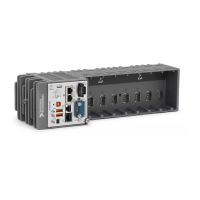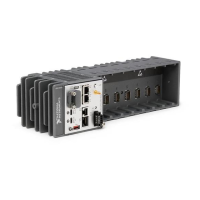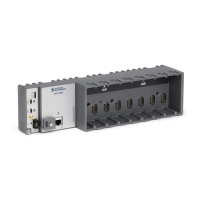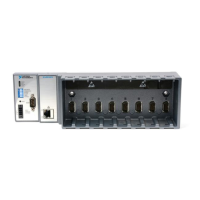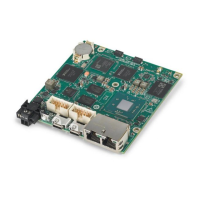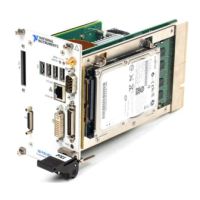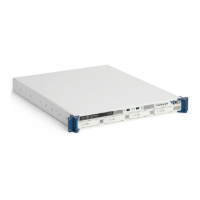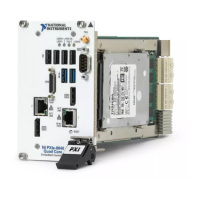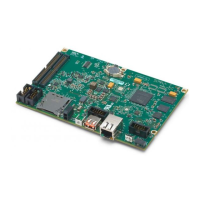© National Instruments | 1-41
NI cDAQ-9132/9133/9134/9135/9136/9137 User Manual
Note Screw the slot cover closed completely. Tighten the captive screws to a
maximum torque of 0.75 N ·
m (6.7 lb · in.) using a #1 Phillips screwdriver. Do not
overtighten.
USER1 Button
The general-purpose USER1 button is user defined. You can use the system hardware property
node from the NI System Configuration API to read the state of the USER1 button. For
information about programming the USER1 button, go to
ni.com/info and enter the Info
Code ex4b9n.
Chassis Grounding Screw
For EMC compliance, the cDAQ controller must be connected to earth ground through the
chassis ground, shown in Figures 1-1 and 1-2.
The wire should be 1.31 mm
2
(16 AWG) solid copper wire with a maximum length of 1.5 m
(5 ft). Attach the wire to the earth ground of the facility’s power system. For more information
about earth ground connections, go to
ni.com/info and enter the Info Code emcground.
Note If you use shielded cabling to connect to a C Series module with a plastic
connector, you must attach the cable shield to the chassis grounding terminal using
1.31 mm
2
(16 AWG) or larger wire. Use shorter wire for better EMC performance.
CMOS Battery and CMOS Reset Button
The cDAQ controller contains a CMOS battery, a lithium cell battery that stores the system
clock information when the controller is powered off. There is only a slight drain on the CMOS
battery when power is applied to the cDAQ controller power connector. The rate at which the
CMOS battery drains when power is disconnected depends on the ambient storage temperature.
For longer battery life, store the cDAQ controller at a cooler temperature. Refer to the CMOS
Battery section of the specifications document for your cDAQ controller for the expected battery
lifetime.
The
CMOS BATTERY IS DEAD warning appears onscreen during the power-on self test if the
battery is dead. The controller still starts, but the system clock is reset to the date and time of the
BIOS release. The battery is not user replaceable. If you need to replace the CMOS battery,
contact National Instruments.
Resetting the System CMOS and BIOS Settings
The cDAQ controller BIOS configuration information is stored in a nonvolatile memory
location that does not require a battery to preserve the settings. Additionally, the BIOS optimizes
boot time by saving specific system information to memory backed up by a battery (CMOS).
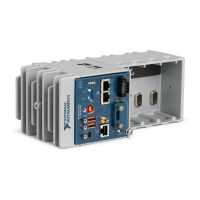
